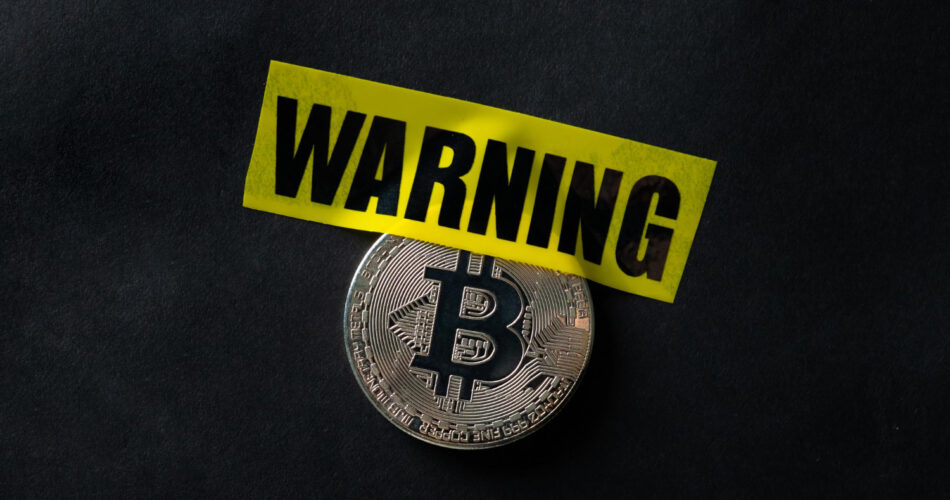In the dynamic world of cryptocurrency, the allure of quick profits often overshadows the potential risks. One such risk is the ever-looming threat of a “Crypto Scam”. According to our research, approximately 900 people fall victim to such scams every month. This article aims to shed light on the dark underbelly of the crypto market, emphasizing the importance of awareness about crypto scams, and providing you with the tools to safeguard your investments.
Table of Contents
Understanding Cryptocurrency
Cryptocurrency, at its core, is a digital or virtual form of currency that utilizes cryptography for security. This makes it incredibly difficult to counterfeit, providing a layer of trust and security for users. The concept of cryptocurrency was born out of the digital age, with Bitcoin being the first, introduced by an anonymous entity known as Satoshi Nakamoto in 2009.
Unlike traditional currencies issued by central banks (known as fiat currencies), cryptocurrencies operate on technology called blockchain. A blockchain is a decentralized technology spread across many computers (nodes) that manages and records transactions. This decentralization is a key feature of most cryptocurrencies, making them immune to government interference or manipulation.
One of the main attractions of cryptocurrencies is their potential for high returns. For instance, Bitcoin, the first and most well-known cryptocurrency, has seen its value skyrocket from virtually nothing to tens of thousands of dollars per coin. This potential for rapid growth has attracted many investors, both seasoned and novice.
However, the volatile nature of cryptocurrencies also means that the risk is high. Prices can fluctuate wildly within short periods, leading to significant financial gains or losses. This volatility, coupled with the relative newness of the market, has led to a lack of understanding among many investors, making them susceptible to scams and fraud.
Moreover, the benefits of cryptocurrencies extend beyond investment opportunities. They offer the potential for a new form of transferring and storing value. For example, cryptocurrencies can facilitate international transactions without the need for currency exchange or bank intermediaries, often leading to faster and cheaper transactions.
Despite these benefits, it’s essential to remember that investing in cryptocurrency carries risk, just like any investment. Understanding the mechanics of cryptocurrency, its benefits, and potential risks is the first step towards making informed decisions in the crypto market.
The Dark Side of Cryptocurrency: Scams

While the world of cryptocurrency offers a plethora of opportunities, it also harbors a darker side: the prevalence of scams. Crypto scams are fraudulent schemes that leverage the complexity and novelty of the cryptocurrency market to exploit unsuspecting investors. They are the shadowy underbelly of the crypto world, often causing significant financial losses and eroding trust in this innovative financial sector.
The Anatomy of Crypto Scams
Crypto scams typically prey on the lack of understanding and regulation in the crypto market. The decentralized nature of cryptocurrencies, while one of their main attractions, also makes them a fertile ground for fraudsters. The absence of a central authority means that once a transaction is made, it is irreversible. This characteristic, coupled with the anonymity provided by cryptocurrencies, makes it easier for scammers to evade detection and prosecution.
The Ripple Effect of Crypto Scams
The impact of crypto scams extends beyond individual victims. They can undermine the entire crypto market by damaging its reputation and causing regulatory backlash. For instance, high-profile scams can lead to panic selling, causing prices to plummet and destabilizing the market. They can also lead to stricter regulations, potentially stifling innovation and growth in the sector.
The Many Faces of Crypto Scams
The methods used by scammers are diverse and constantly evolving, ranging from Ponzi schemes and fake Initial Coin Offerings (ICOs) to phishing attacks and fake exchanges. These scams often promise high returns with little to no risk, exploiting the greed and FOMO (Fear of Missing Out) of potential victims.
Navigating the Crypto World Safely
Despite the risks, the potential benefits of cryptocurrencies are too significant to ignore. Therefore, it’s crucial for investors to be aware of these scams, understand how they work, and learn how to protect themselves. The first step in this process is recognizing that not all that glitters in the crypto world is gold.
Types of Crypto Scams
| Type of Scam | Characteristics | How to Avoid |
|---|---|---|
| Ponzi Schemes | Promises high returns, pays older investors with funds from newer ones | Be wary of investments promising high returns with little risk. Research the investment thoroughly |
| ICO Scams | Fraudulent Initial Coin Offerings with no real product, often using fake team profiles and overpromising on the product | Research the team behind the ICO. Check their online presence and the feasibility of their product |
| Crypto Coin Scams | Creation of fake cryptocurrencies or manipulation of legitimate ones | Research any coin thoroughly before investing. Check the credibility of the team behind the coin and its market performance |
| Fake Exchanges and Wallets | Platforms designed to steal your crypto, often offer competitive market rates | Only use reputable platforms. Check reviews and ratings before using an exchange or wallet |
| Phishing Scams | Attempts to steal sensitive information like private keys, often through fake emails or websites | Never share your private keys. Be cautious of emails asking for sensitive information |
| Pump and Dump Schemes | Artificial inflation of crypto prices followed by a crash, orchestrated by a small group of informed people | Be cautious of sudden price rises. Research the coin before investing |
| Mining Scams | Fake services offering mining capabilities for a fee, often promise high returns and require you to recruit others | Be skeptical of services promising high returns from mining. Research the company thoroughly |
Crypto scams come in various forms, each with its unique tactics and methods of deception. Here are some of the most common types:
1. Ponzi Schemes
Named after Charles Ponzi, who became notorious for using the technique in the 1920s, Ponzi schemes are a type of investment fraud that pays profits to earlier investors with funds collected from more recent investors. In the crypto world, these schemes often promise high returns and use referral programs to encourage existing participants to bring in new ones. However, the scheme eventually collapses when it becomes impossible to attract new investors, leaving those at the bottom of the pyramid with significant losses.
2. ICO Scams
Initial Coin Offerings (ICOs) are a way for cryptocurrency startups to raise funds by selling a portion of their tokens to early investors. However, not all ICOs are legitimate. Some are orchestrated by fraudsters who have no intention of developing the product. They create hype around the ICO, often using fake team profiles and overpromising on the product, to attract investors. Once they collect the funds, they disappear, leaving investors with worthless tokens.
3. Crypto Coin Scams
Crypto coin scams involve the creation of fake cryptocurrencies. Scammers may create a new coin, build hype around and then dump it. Once they’ve got the funds, they disappear, leaving investors with worthless coins.
4. Fake Exchanges and Wallets
These scams involve the creation of fake crypto exchanges or wallets designed to steal users’ cryptocurrencies. They often offer competitive market rates to lure users into depositing their cryptocurrencies. Once the deposit is made, the scammers either steal the funds directly or gain access to the users’ private keys to empty their wallets.
5. Phishing Scams
Phishing scams involve tricking individuals into revealing sensitive information such as private keys or wallet passwords. This is often done through fake emails or websites that mimic legitimate crypto platforms. Once the scammers have the necessary information, they can access the victims’ wallets and steal their funds.
6. Pump and Dump Schemes
In pump and dump schemes, a small group of informed people buy a cryptocurrency and then artificially inflate its price through misleading or outright false news. Once the price has risen, they sell their holdings, causing the price to crash and leaving other investors with significant losses.
7. Mining Scams
Mining scams involve companies that claim to mine cryptocurrencies for you in return for a fee. These companies often promise high returns and require you to recruit others to increase your earnings. However, in many cases, these companies don’t do any mining at all. Instead, they use the funds from new recruits to pay ‘returns’ to earlier members, similar to a Ponzi scheme.
Each of these scams has unique characteristics, but they all share a common goal: to deceive and defraud unsuspecting investors. By understanding how these scams work, you can better protect yourself and your investments in the crypto world.
Crypto Scams in Social Media: A New Playground for Fraudsters

In the digital age, social media platforms have become a common ground for interaction, networking, and information exchange. However, they have also become a breeding ground for various types of scams, including crypto scams. Here’s a closer look at how crypto scams are proliferating on some of the most popular social media platforms:
WhatsApp Crypto Scam
WhatsApp, with its end-to-end encryption and vast user base, has become a popular platform for crypto scams. Scammers often use the platform to spread false information or lure users into fraudulent investment schemes. For instance, they may impersonate a trusted contact or a well-known crypto investor and ask users to invest in a ‘guaranteed’ crypto opportunity. Always verify any investment opportunities independently and be wary of unsolicited investment advice or offers on WhatsApp.
Tinder Crypto Scam
On dating platforms like Tinder, crypto scams often start with a budding romance. Scammers create fake profiles and build relationships with their victims. Once trust is established, they start discussing cryptocurrency investments. They may suggest a ‘profitable’ crypto investment and convince their match to invest. Remember, it’s risky to mix romance and investments, especially with someone you’ve only met online.
Crypto Scam on Instagram
Instagram crypto scams often involve scammers impersonating well-known crypto influencers or companies. They may use these fake profiles to promote scams, often promising high returns for a small investment. They may also use Instagram’s direct messaging feature to contact potential victims directly. Always check the authenticity of profiles and verify any investment opportunities independently.
Twitter & Telegram Crypto Scam
Twitter and Telegram are another platforms where crypto scams are rampant. Scammers often create fake accounts impersonating well-known figures in the crypto world or use hijacked accounts to promote their scams. A common scam involves promising to ‘double’ the crypto of users who send their coins to a specific wallet. Be skeptical of such ‘giveaways’ and always verify the information from official sources.
How to Identify a Crypto Scam

Identifying a crypto scam can be challenging, especially given the complex nature of the cryptocurrency market. However, there are several red flags and warning signs that can help you spot potential scams:
1. Unusually High and Guaranteed Returns
One of the most common characteristics of a crypto scam is the promise of unusually high returns with little to no risk. Investments typically involve some level of risk, and the potential for high returns usually comes with higher risk. If an investment opportunity promises guaranteed profits or returns that seem too good to be true, it’s likely a scam.
2. Lack of Transparency or Information
Legitimate companies and investments are usually transparent about their operations, providing detailed information about their team, products, and financial status. If a company or investment opportunity is vague about these details or avoids providing them altogether, it’s a red flag.
3. Pressure to Act Quickly
Scammers often create a sense of urgency to pressure potential victims into making hasty decisions. They may claim that their offer is only available for a limited time or that you must invest immediately to secure high returns. Legitimate investment opportunities won’t pressure you into making quick decisions without proper research and consideration.
4. Unsolicited Offers
Be wary of unsolicited investment offers, especially those received through social media, email, or text message. Scammers often use these channels to reach potential victims. Always research any unsolicited investment opportunities thoroughly before deciding to invest.
5. Complex or Confusing Language
Scammers often use complex or confusing language to make their schemes seem more legitimate or to confuse potential victims. If you don’t fully understand an investment opportunity, it’s best to avoid it.
6. No Proof of Registration
Legitimate investment firms are usually registered with a regulatory body. If a company isn’t registered or can’t provide proof of registration, it’s likely a scam.
By being aware of these red flags, you can better protect yourself from crypto scams. Remember, the key to safe investing is thorough research, understanding the investment, and maintaining a healthy level of skepticism.
Preventing Crypto Scams

Prevention is the best defense against crypto scams. Here are some best practices to help you safeguard your investments:
1. Do Thorough Research
Before investing in any cryptocurrency or crypto-related venture, it’s crucial to do your homework. Research the project, the team behind it, and its market reputation. Look for red flags such as unrealistic promises of high returns, lack of transparency, or pressure to invest quickly.
2. Use Secure and Reputable Platforms
Always use reputable exchanges and wallets for your cryptocurrency transactions. Look for platforms that have strong security measures in place, such as two-factor authentication and encryption. Check online reviews and ratings to gauge the platform’s reputation.
3. Never Share Your Private Keys
Your private keys are what allow you to access your cryptocurrency holdings. If someone else gets hold of them, they can easily steal your funds. Therefore, never share your private keys with anyone, and store them in a secure place.
4. Be Skeptical of Unsolicited Offers
If you receive an unsolicited investment offer, be skeptical. Scammers often use such offers to lure victims. Always research unsolicited investment opportunities thoroughly before deciding to invest.
5. Understand the Investment
Before investing, make sure you understand what you’re investing in. If the investment is described using complex or confusing language, or if you don’t understand how the investment will generate returns, it’s best to avoid it.
6. Regularly Monitor Your Investments
Keep a close eye on your investments and regularly check your wallet and exchange accounts to ensure there are no unauthorized transactions.
By following these best practices, you can significantly reduce your risk of falling victim to a crypto scam. Remember, the world of cryptocurrency offers vast opportunities, but it’s essential to navigate it with caution and awareness.
Crypto Scam Recovery

Realizing you’ve fallen victim to a crypto scam can be a distressing experience. However, it’s important to know that there are steps you can take to mitigate the damage and potentially recover your lost funds. Here’s what you should do if you’ve been scammed:
1. Don’t Panic
While it’s natural to feel stressed or anxious, it’s crucial to stay calm and think clearly about your next steps. Acting in haste could lead to further losses.
2. Secure Your Accounts
Change your passwords and security settings for all your financial accounts, especially if you’ve shared sensitive information with the scammers. This can help prevent further unauthorized access and losses.
3. Report the Scam
Report the scam to your local law enforcement agency and provide them with as much information as possible. This could include the name and contact details of the scammer, the method of payment, and any communications you’ve had with them.
4. Contact a Legal Advisor
Consult with a legal advisor to understand your rights and explore possible legal recourse. Depending on your jurisdiction and the nature of the scam, you may be able to take legal action against the scammers.
5. Report to Online Platforms
If the scam occurred on an online platform such as a crypto exchange or social media site, report it to the platform immediately. They may be able to take action against the scammer and help prevent others from falling victim to the same scam.
6. Share Your Experience
Consider sharing your experience publicly or with a scam prevention organization. While it may be uncomfortable, your story could help warn others and prevent them from falling for the same scam.
7. Learn from the Experience
Use this experience as a learning opportunity. Reflect on what went wrong and how you can avoid similar scams in the future. Remember, knowledge is your best defense against scams.
8. Seek Support
Reach out to support groups or online communities for victims of crypto scams. Sharing your experience can help you cope with the emotional impact of the scam and provide you with valuable advice from others who have been in a similar situation.
While falling victim to a crypto scam can be a painful experience, it’s important to remember that you’re not alone. Many people have been in your shoes, and there are resources and support available to help you navigate this challenging situation.
Conclusion
In the rapidly evolving world of cryptocurrency, the potential for high returns often comes with high risks. Among these risks, crypto scams pose a significant threat, exploiting the complexity and novelty of the market to deceive unsuspecting investors. From Ponzi schemes and fake ICOs to phishing scams and fake exchanges, these scams take various forms, each with its unique tactics and methods of deception.
However, by staying informed and vigilant, investors can navigate the crypto landscape safely and profitably. Understanding the mechanics of cryptocurrency, recognizing the red flags of scams, and following best practices for prevention are crucial steps in this process.
The allure of cryptocurrencies is undeniable, and their potential benefits are too significant to ignore. They offer a new form of transferring and storing value, facilitating faster and cheaper transactions, and providing opportunities for high returns. But like any investment, they should be approached with caution and understanding.
In conclusion, the key to safeguarding your investments in the crypto world lies in awareness and prevention. By understanding the dark side of cryptocurrency and learning how to protect yourself, you can explore the exciting world of cryptocurrency with confidence and peace of mind. Remember, not all that glitters in the crypto world is gold, but with the right knowledge and tools, you can certainly find your share of treasure.
FAQs
What is a crypto scam?
A crypto scam is a fraudulent scheme that uses cryptocurrency as a bait to defraud individuals.
How can I identify a crypto scam?
Look for red flags such as unusually high returns, lack of transparency, and unsolicited offers.
What should I do if I’ve been scammed?
Report the scam to local authorities, seek legal advice, and share your experience to warn others.
How to report a crypto scam?
1. Document all relevant information about the scam.
2. Report the incident to your local law enforcement agency.
3. Notify the relevant financial institutions if your bank or credit card was involved.
4. Report the scam to the social media platform or website where it occurred.
5. Consult with a legal advisor for further actions.


